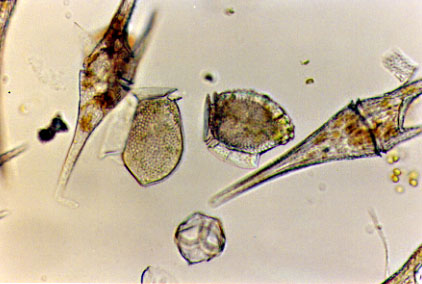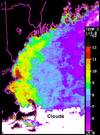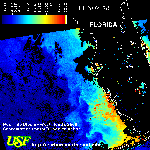image: Half Moon Bay, San Mateo County, California
Going out with a bang. Sending all our men. Into kingdom come. The mighty land that stands. Heal the waterfalls, don't you see it calls. heal the waters falls, the place our hearts call. People everywhere, make me fill your swear. Down and dirty is the game, when are they .... going to rescue this day? Going out with a bang. Telling all the land, it's about time to stand. walking in hand in hand. It's going to be a mighty hand.
Water blue is you. Red sails that seem so true. Walk on home to you. Blessings that just don't seem true. How do I grow, without what I know. The water is blue, but now it's red like our toes. Walking on the red road, the tides everywhere. It's a place we seem to fear.
Thank you mighty hand. Make it rise and stand. Feel the tides far. Feel the tides near. Walk into a space. Keep it close and make it a race. Walk to brotherhood. The land is rolling, rolling thunder, can't you hear it (whispering). Can't you hear it? Can't you hear it? I want you to shout.
There we are bound to the ground. The color of red makes a sound. And what was blue, now sheds a tear. Looking at what we most fear. Killing all our lives. Not inside not outside, but everywhere. And it's been told. That this day would be sow bold. Planting the seeds of time. What were we blind?
Stories everyday, looking for a brand new way. Holding close to me. Rescue divinity. It's a sky that's red, now my water is red too. It's a day of dawning true. When the soul comes to rescue you. And it's red, it's blue, what am I going to do? ????? ???? ???? ???? ??? ????
I pray and bow my head. I say, glory to God, who treats us right. it must be a cleansing sign. It's time for us not to be so blind. Blessings to the red, the blue and sadness inside of you. Tomorrow comes another day. Let's all learn to reach down and pray. Bending our arms in display (bow in humbleness in prayer). (Rejoicing drum) ♥•*´) ¸.•*´´) ¸.•*´¨) ¸.•*´¨) ¸.•*¨¨) ♥•*´) ¸.•*´´) ¸.•*´¨) ¸.•*´¨) ¸.•*¨¨) ♥•*´) ¸.•*´´) ¸.•*´¨) ¸.•*´¨) ¸.•*¨¨) ♥•*´) ¸.•*´´) ¸.•*´¨) ¸.•*´¨) ¸.•*¨¨) ♥•*´) ¸.•*´´) ¸.•*´¨) ¸.•*´¨) ¸.•*¨¨) ♥•*´) ¸.•*´´) ¸.•*´¨) ¸.•*´¨) ¸.•*¨¨) (vision: dancing) ♥•*´)¸.•*´´)¸.•*´¨)¸.•*´¨)¸.•*¨¨) ♥•*´) ¸.•*´´) ¸.•*´¨) ¸.•*´¨) ¸.•*¨¨) (dancing ) ♥•*´) ¸.•*´´) ¸.•*´¨) ¸.•*´¨) ¸.•*¨¨)♥•*´) ¸.•*´´) ¸.•*´¨) ¸.•*´¨) ¸.•*¨¨) ♥•*´) ¸.•*´´) ¸.•*´¨) ¸.•*´¨) ¸.•*¨¨) ♥•*´) ¸.•*´´) ¸.•*´¨) ¸.•*´¨) ¸.•*¨¨)♥
Sung by White Buffalo Calf Woman, your Twin Deer Mother, Drum by Holiness David Running Eagle Shooting Star, your Father Red Hand, Second Drum by Stand Up Dream, our Wondrous Ship Sails. We share prayer for the RED TIDES of the WORLD. Blessings are what keeps us safe!
Pray With Elders around the World
Hear Your Relatives Perfect Flowing Hearts
Listen to the Blessed Rainbow Colors of the Four Directions
Learn Warrior Skills with the Peaceful Wisdom Prayer!Listen to the Blessed Rainbow Colors of the Four Directions
Father Red Hand, walking in the trees (among the trees of life), kissing (unification), here is my heart, going two (united) by three (dream is born), walking along, giving love to thee. Father Red Hand purifying love, flowing and glowing (red fire) and driving all that's bad (purification bring all home), home to the heart beat (pounding heart flows life), where all belongs and keeps, inside the blood (red road, the law of love). There I stand up (rising sun) to the hands of God, where my embrace holds all that I see below. Running Eagle, my Shooting Star does sea, the many children, God gave to liberty.
Crimson Tide (a.k.a. "Toxic Algal Bloom" or TAB)
Crimson Tide (a.k.a. "Toxic Algal Bloom") has been a common occurrence in the coastal areas of the temperate and tropical regions of the planet. In the marine environment, single-celled, microscopic, plant-like organisms naturally occur in the well-lit surface layer of any body of water. These organisms, referred to as phytoplankton or microalgae, form the base of the food web upon which nearly all other marine organisms depend. Unfortunately, depending on where you go , or you ask, there is concern that the biological weapons programs of different nations may have led to the recent mutation of the Crimson Tide into a more toxic variety. Some environmentalists believe that the recent events of the Third Great War have triggered an "evolutionary event" within the oceans of the planet. Either way, many scientists fear that the crimson tide events threaten the food supply, and may threaten the food supply of coastal communities.Of the 5000+ species of marine phytoplankton that exist worldwide, about 2% are known to be harmful or toxic. Blooms of harmful algae can have large and varied impacts on marine ecosystems, depending on the species involved, the environment where they are found, and the mechanism by which they exert negative effects. Examples of common harmful effects of TABs include:

- the production of neurotoxins which cause mass mortalities in fish, seabirds and marine mammals
- human illness or death via consumption of seafood contaminated by toxic algae or by swimming in the algal field
- mechanical damage to other organisms, such as disruption of epithelial gill tissues in fish, resulting in asphyxiation
- oxygen depletion of the water column (hypoxia or anoxia) from cellular respiration and bacterial degradation.
- these blooms are not associated with tides
- not all algal blooms cause reddish discoloration of water
- not all algal blooms are harmful, even those involving red discolouration
Although toxic blooms often turn the water reddish brown, many nontoxic species or reddish brown plankton cause the same discoloration. Conversely, toxic plankton may be numerous enough to toxify shellfish, but not sufficiently abundant to discolor water. Discolored water should always be regarded with suspicion. It should be noted that even during low concentrations during a crimson tide event caused by Alexandrium fundyense, the algae can cause the swimmer to die of toxic shock and oxygen poisoning.
Thank you
http://trooperworld.wikidot.com/crimson-tide
"Visible" Phytoplankton Blooms
 California Noctiluca Bloom |  Florida Red Tide Bloom of Karenia brevis |
 Texas Brown Tide Bloom of Aureoumbra |  Close-up of a Texas Brown Tide Bloom of Aureoumbra |
 York River (Chesapeake Bay) Red Tide Bloom of Cochlodinium heterolobatum | 1999 Hong Kong Red Tide (Unidentified species) |
 |  |  |
| 9/21/99 | 9/23/99 | 9/29/99 |

Photo credit: J.D. Kinnon
Photomicrographs of Harmful Algal Species
 Immunofluorescently-labeled Alexandrium cell Alexandrium sp. (most likely fundyense) from a bloom near Casco Bay, Maine in 1998. The Alexandrium cell (about 35µm in diameter) is the smaller of the two cells. It shows the red autofluorescence of the chlorophyll surrounded by a bright green immunofluorescent stain that specifically targets the cell surface antigens of Alexandrium. The other larger cell is a co-occurring heterotrophic Protoperidinium sp. that lacks chlorophyll. (Kristin Gribble, WHOI)
Immunofluorescently-labeled Alexandrium cell Alexandrium sp. (most likely fundyense) from a bloom near Casco Bay, Maine in 1998. The Alexandrium cell (about 35µm in diameter) is the smaller of the two cells. It shows the red autofluorescence of the chlorophyll surrounded by a bright green immunofluorescent stain that specifically targets the cell surface antigens of Alexandrium. The other larger cell is a co-occurring heterotrophic Protoperidinium sp. that lacks chlorophyll. (Kristin Gribble, WHOI)  Fluorescently-labeled Alexandrium cell
Fluorescently-labeled Alexandrium cell  Mixed bloom of Dinophysis acuta and D. norvegica co-occurring with a bloom of Ceratium furca
Mixed bloom of Dinophysis acuta and D. norvegica co-occurring with a bloom of Ceratium furca satellite imagery during bloom events
 North Carolina Sea Surface Temperature image of a Karenia brevis bloom The image to the left is an AVHRR satellite infrared image depicting sea-surface temperature off the coast of North Carolina in late October, 1987. This advanced, very high resolution radiometer (AVHRR) photo shows a blue filament of Gulf Stream water (24-25°C) near Cape lookout that is now known to have transported toxic Karenia brevis cells from the Gulf Stream (deep blue), into the colder (yellow) coastal waters. The filament remained detectable in satellite images for three weeks. (T. Leming)
North Carolina Sea Surface Temperature image of a Karenia brevis bloom The image to the left is an AVHRR satellite infrared image depicting sea-surface temperature off the coast of North Carolina in late October, 1987. This advanced, very high resolution radiometer (AVHRR) photo shows a blue filament of Gulf Stream water (24-25°C) near Cape lookout that is now known to have transported toxic Karenia brevis cells from the Gulf Stream (deep blue), into the colder (yellow) coastal waters. The filament remained detectable in satellite images for three weeks. (T. Leming)  Gulf of Maine Sea Surface Temperature image of an Alexandrium sp. bloom
Gulf of Maine Sea Surface Temperature image of an Alexandrium sp. bloomAlong the southern Maine, New Hampshire and Massachusetts coastlines, Alexandrium blooms are known to be associated with a lower salinity, warmer water mass (termed the Western Maine Coastal Current) that forms during spring due to runoff of local rivers. Satellite-derived Sea Surface Temperature (SST) imagery can be used to show the location of the warmer waters of the WMCC and associated Alexandrium cells as it is influenced by winds. (Click on the thumbnail image to the left.) Visible in the larger image is a narrow band of deeper colder water (blue) that came to the surface adjacent to the coast and replaced the warmer WMCC waters (yellow, orange and red) that were transported offshore by southwesterly winds. Under these conditions (known as upwelling), shellfish toxicity declined along the coast the Alexandrium cells were transported offshore with the waters of the WMCC. (NOAA Coastwatch, Bruce Keafer, WHOI)
 Florida Coastal Zone Color Scanner Image (CZCS) of a Karenia brevis bloom
Florida Coastal Zone Color Scanner Image (CZCS) of a Karenia brevis bloomThis coastal zone color scanner (CZCS) image indicates a red tide bloom in November, 1978. The red areas south of Sarasota have chlorophyll a concentrations of greater than 3 micrograms per liter. Water samples confirmed the presence of K. brevis in those waters.
Thank you http://www.whoi.edu/science/B/redtide/rtphotos/rtphotos.html
RED TIDE Chesapeake Bay
Last year, massive “red tide” algae blooms took over much of the Elizabeth River near Hampton Roads. The algae blooms when there is too much phosphorus and nitrogen in the water, which suffocates fish and other aquatic life. Algae blooms have plagued the Chesapeake Bay for the last several years, creating massive dead zones in the Bay.
Florida Red Tide
Eating clams, oysters or other shellfish from restricted areas during a Florida red tide can result in Neurotoxic Shellfish Poisoning or “NSP”. It is safe to eat fish and shellfish sold in restaurants during a Florida red tide event, since restaurants receive commercially harvested seafood from safe areas. Signs and symptoms of NSP include: vomiting, diarrhea, stomach pain, and tingling of the fingers, followed by loss of feeling and control of the legs, and sometimes difficulty breathing. If symptoms are severe, call 911 for emergency treatment. If symptoms are mild, contact your doctor.People can also be exposed to Florida red tide toxin through the air. Symptoms can include coughing, sneezing and watery eyes. People with asthma or other lung conditions may find their conditions are aggravated when they are near the beach, especially on days with an onshore breeze. Returning to an air conditioned area usually relieves discomfort. Anyone who experiences continued difficulty breathing after being on the beach during a red tide should seek medical attention at once.
The past 20 years have been a very productive time in freshwater and marine toxin research. Scientists have identified the organism responsible for Florida red tide – Karenia brevis, a microalgae that resides in Gulf waters year-round, but which seasonally forms huge blooms that can kill fish, marine mammals and birds. Scientists have also learned more about the effects of Florida red tide toxin, called brevetoxin, on people who breathe it along the shores or while boating. Research continues on these and other aquatic toxin topics. For more information, please visit the Florida Fish and Wildlife Research Institute website or the Florida Department of Health Aquatic Toxins Program website. Both of these websites provide detailed information on red tide and other marine toxins including health information.
- To report symptoms from Florida red tide or any aquatic toxin, call 1-800-232-8635 and speak to a poison specialist.
- To report fish kills to the Florida Fish and Wildlife Research Institute, call 1-888-636-0511.
- To view current beach condition reports for Southwest Florida, go to www.mote.org/beaches or call 941-BEACHES.
- http://www.med.miami.edu/poisoncontrol/x59.xml
Brevetoxin has been measured in air during red tide events and human exposure levels have been reported; however, the long-term health risk associated with inhalation of brevetoxins remains to be defined. Individuals are continually exposed to environmental chemicals capable of damaging DNA like carcinogens found in tobacco smoke and air pollution. It is possible that exposure to brevetoxins can add to the cumulative amount of chemically altered DNA in the lungs; an indicator of cancer risk.
"This represents a significant breakthrough in defining the metabolic transformation of brevetoxins and the potential long-term health effects of red tides. It should change perceptions of risk and management of inhalation exposure to harmful algal blooms," notes Ramsdell.
Red tides in the Gulf of Mexico are common, and often persistent, naturally occurring events that release toxins into sea spray aerosols. These aerosols are a particular problem at beaches, as they can cause respiratory distress to lifeguards and beachgoers. Although these shorter-term effects of the airborne toxin are well characterized, potential longer-term effects remain a concern to health officials and coastal communities.
Scientists, in NOAA's Oceans and Human Health Initiative, are studying long term health consequences of harmful algal blooms, to predict how the condition of the coastal waters affect human health and how to reduce or eliminate health risks.
The National Oceanic and Atmospheric Administration, an agency of the U.S. Commerce Department, is dedicated to enhancing economic security and national safety through the prediction and research of weather and climate-related events and information service delivery for transportation, and by providing environmental stewardship of our nation's coastal and marine resources. Through the emerging Global Earth Observation System of Systems (GEOSS), NOAA is working with its federal partners, more than 70 countries and the European Commission to develop a global monitoring network that is as integrated as the planet it observes, predicts and protects. http://www.noaanews.noaa.gov/stories2008/20080709_redtide.html
Mother Gives Birth to Joy with Pain and Suffering,
the Law of Love
Western Shore We Rise!
Four Sacred Directions
Western Shore We Rise!
Four Sacred Directions

















BlossomingDeerPetals(Red)BlueLakePeopleLeadingMigration.jpg)






















No comments:
Post a Comment